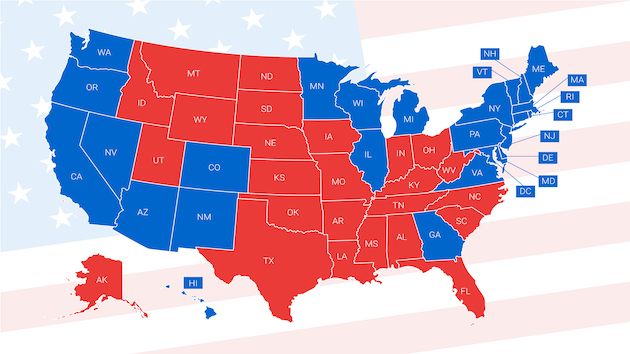History of the Electoral College and How it Traces back to Slavery
January 26, 2021

The electoral college is a process that has existed since 1887. A process that is admired by some and opposed by others. Despite the debate around it, the electoral college has formed and impacted the results of our presidential elections from the start of its existence. This is a very complicated process; continue reading to discover more about the electoral college.
What is the electoral college and how does it work?
Using the electoral college, the president is determined by the majority of electoral votes. Electoral votes are determined by chosen Electors from each state and each elector’s vote is typically determined by the way the state votes. The number of Electors for each state is given by the number of Senators and Representatives that state has. For example, if the majority of the people in Colorado vote for a Democratic candidate, the Elector for that state will most likely honor that decision and vote Democratic. Electors who do not vote the way the majority of the people in that state voted are called faithless Electors. This clearly shifts the definition of American democracy and how it differs from the assumed democracy. The assumed democracy that most countries with democracies have is called the popular vote, where the candidate with the majority of votes wins. On the other hand, the electoral college uses (put into simple terms) a point system. Often called “the road to 270” because the first candidate to reach 270 of the 538 total points wins. This is almost like each state has its own individual presidential election. Even though states have different point values, the candidate with the highest points by states wins. Larger populated states have larger point values in the electoral college, but this number is still not truly proportional to the amount of people per state. This is because smaller populated states proportionally have voters with more influence in the election as fewer voters count as a higher point value than the point value per person in a large state. Then, the idea of swing states comes into mind. Swing states are states that candidates put more campaign focus on because they are the states that typically fluctuate parties each election. For example, in this past election, both candidates focused on Michigan which was considered a swing state because after voting Democratic for multiple years, it was Republican in the 2016 election. As a result, Biden and Trump both campaigned there in hopes to win the 16 electoral votes for that state. In the 2020 election in November, the results showed that Joe Biden had not only flipped Michigan, but he flipped Arizona, Pennsylvania, Wisconsin, and Georgia as well. Currently, the United States is the only country that uses this system of voting. Now that the electoral college and swing states have been explained, what is the history behind this complicated process?
History of the electoral college
The electoral college dates back to the early 1800s in America when there were only a few states and there was a strong tension between The North and The South. As these tensions often controlled politics, the idea of the electoral college was brought about by the southern states because it benefitted their vote. Specifically, the south wanted a way to overpower the already powerful and dominant north, so they thought of an idea that gave more influence to their states. If the southern states could convince Congress to count slaves as three fifths of a person and use population per state to decide each state’s worth in votes, then they would be able to have more power in elections. This is largely due to the fact that southern states had a much higher slave population than those in the north, outweighing The North’s population. Even though the slaves that were counted in the population for electoral votes were legally unable to vote in the south, their presence was used to the advantage of the white males of The South. Giving the people in these states a more powerful vote than those in The North. These discrepancies in the power of a person’s vote still remain today as certain residents in larger states have a vote that is less impactful than one in a smaller, less populous state. Considering those things and with this system of voting, how can America still be considered a democracy?
True Democracy
Many citizens in America are stifled at the fact that even though one candidate got more votes plain and simple than the other, the other candidate can still win the election because they got 270 electoral votes. This brings up questions: does each person’s vote really count, is America even a democracy? All these questions remain unanswered but evidence shows the inequities between vote value for citizens in different states and potentially different parties. Studies show that the electoral college favors Republican votes as that is usually the dominant party in smaller, less populous states. Gallup News shares the statistic that 61% of American adults approve of amending the U.S. Constitution in order to switch elections to popular vote instead of the current electoral process. That means that approximately 3 in 5 Americans are unhappy with the current system. Additionally, Brookings, a public policy organization that conducts in-depth research, shares, “In the 20th century there were 25 presidential elections and none of them resulted in an Electoral College winner who lost the popular vote. However, in the five presidential elections of the 21st century, two ended up with the winner of the popular vote losing the Electoral College.” This explains the recent increase in the need to change America’s voting system. With the newly elected President, Joe Biden, and new members of Congress, Ossoff and Warnock, it is likely that the Democratic majority will have a possibility of getting the Constitution amended (because Democrats support the popular vote, thus the change of the system). This new legislation may be America’s best shot at getting rid of the electoral college. In conclusion, the fate of the electoral college is in the hands of Biden and Democrats in Congress, what will happen next…

